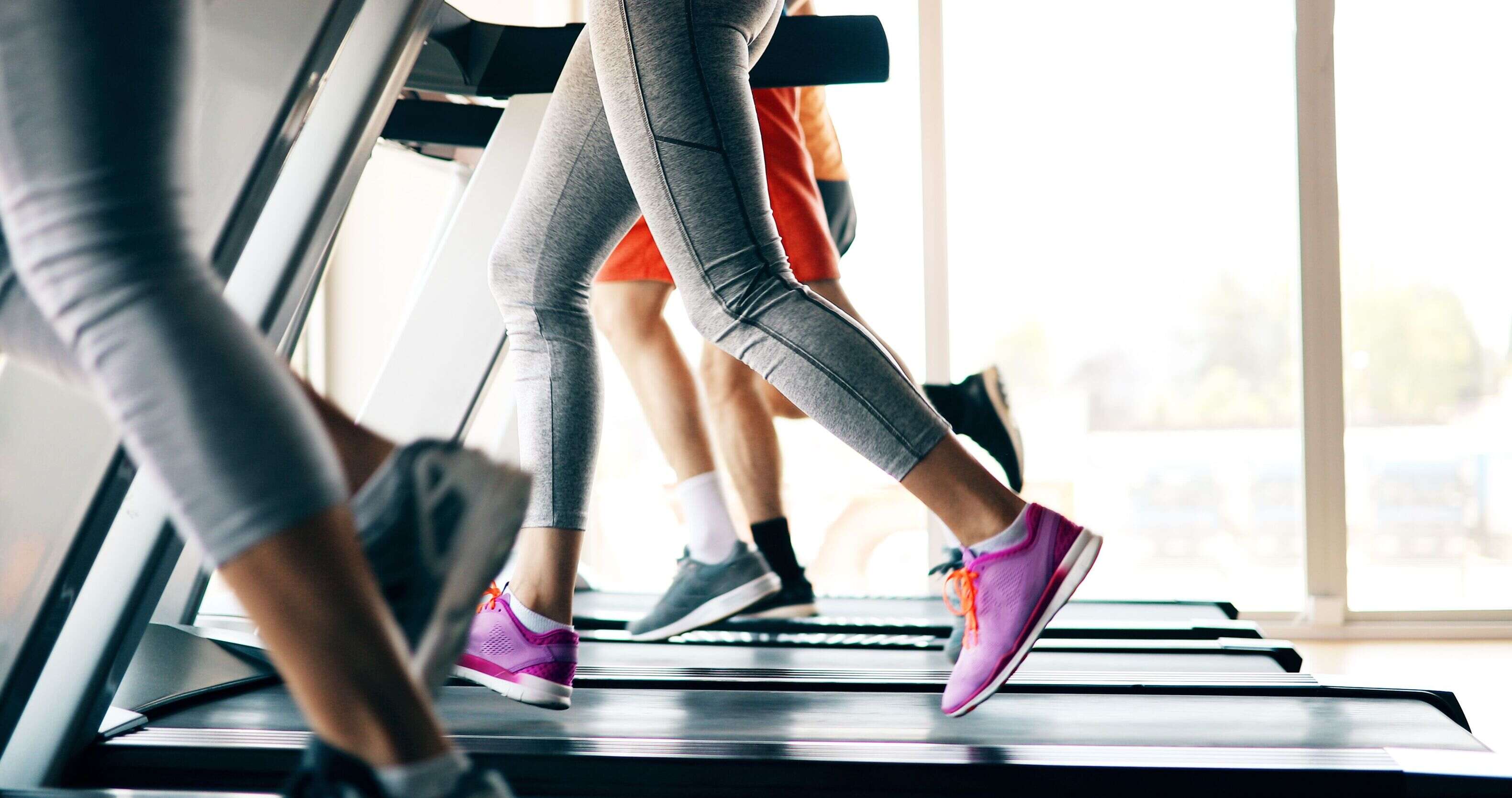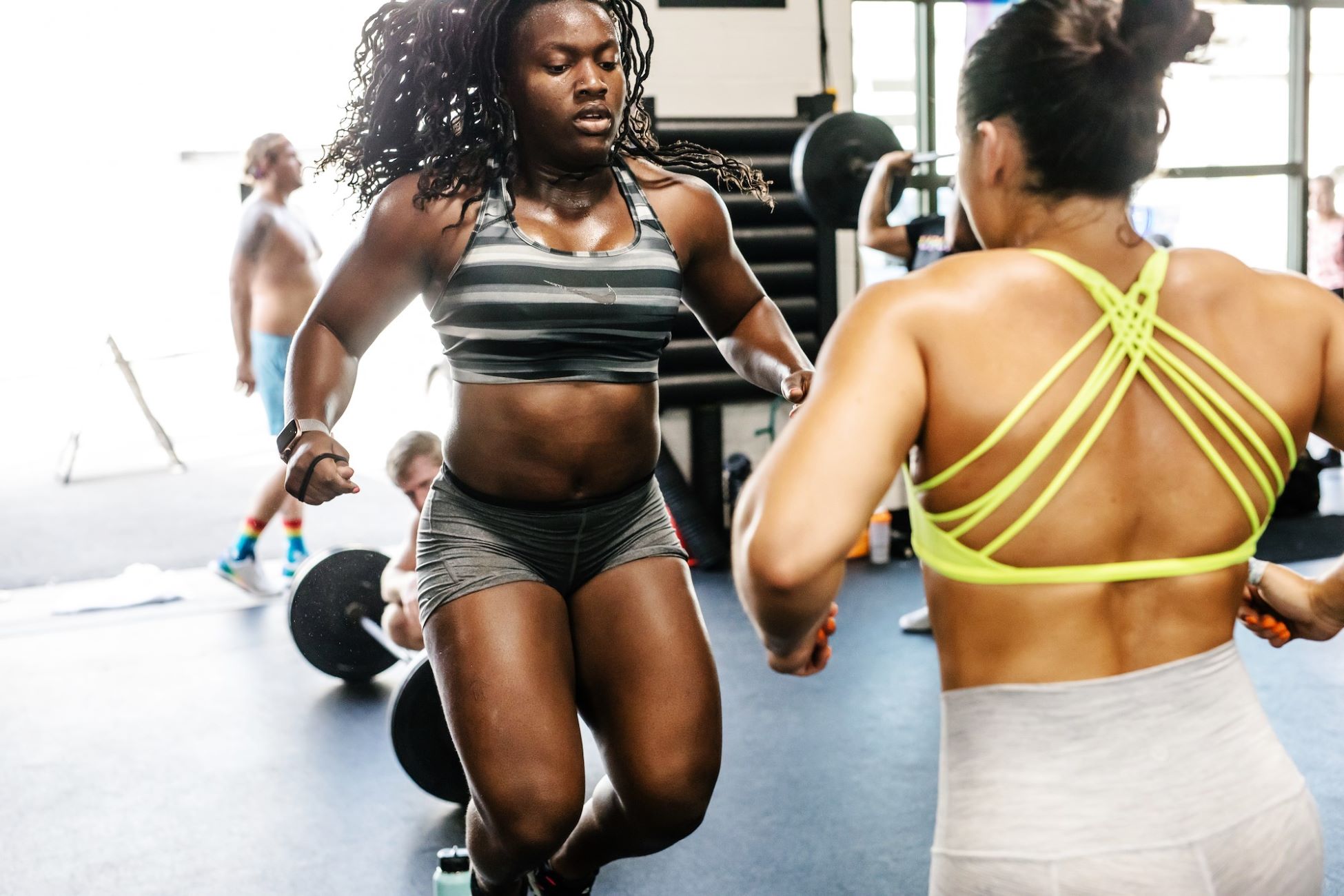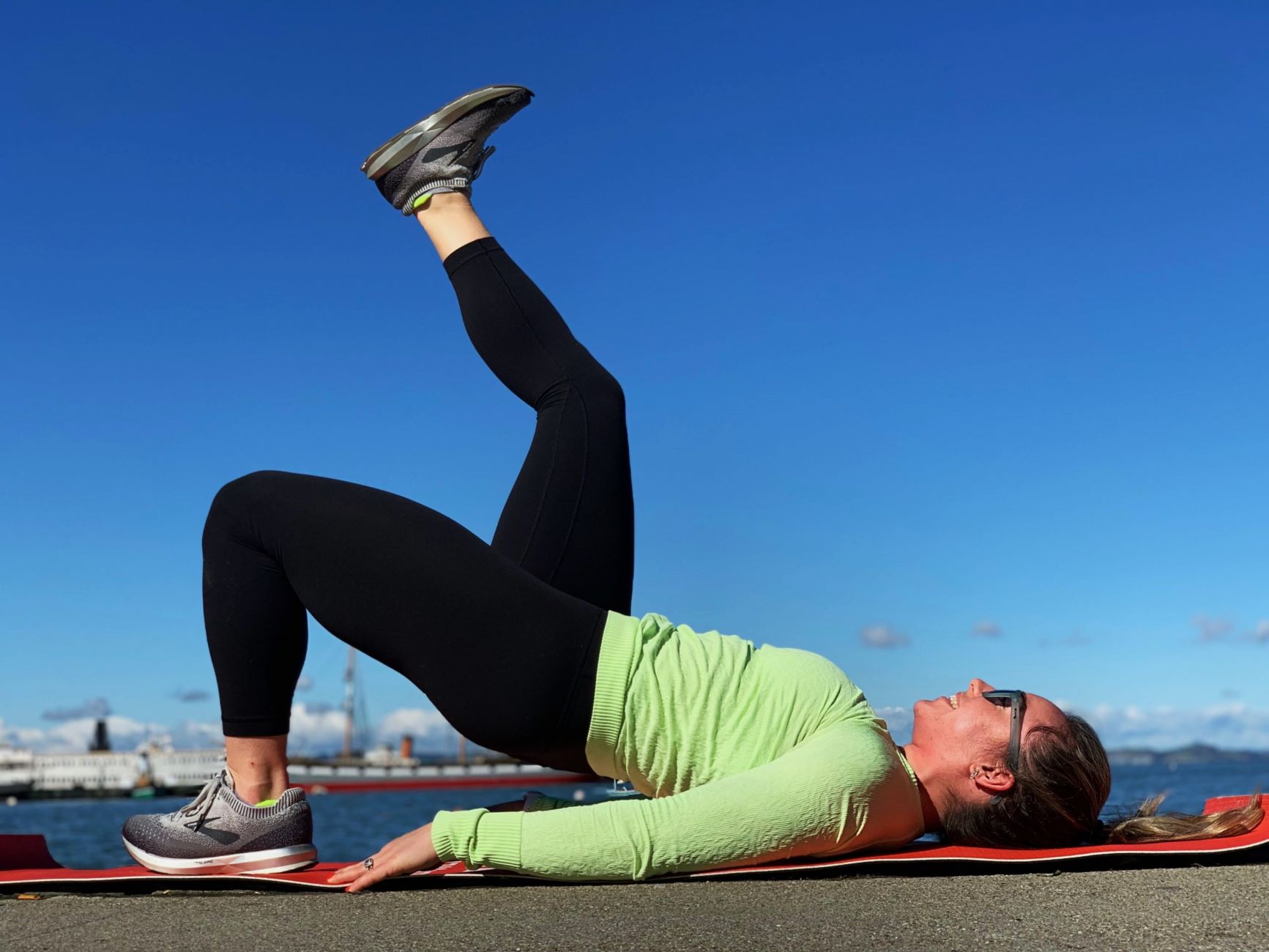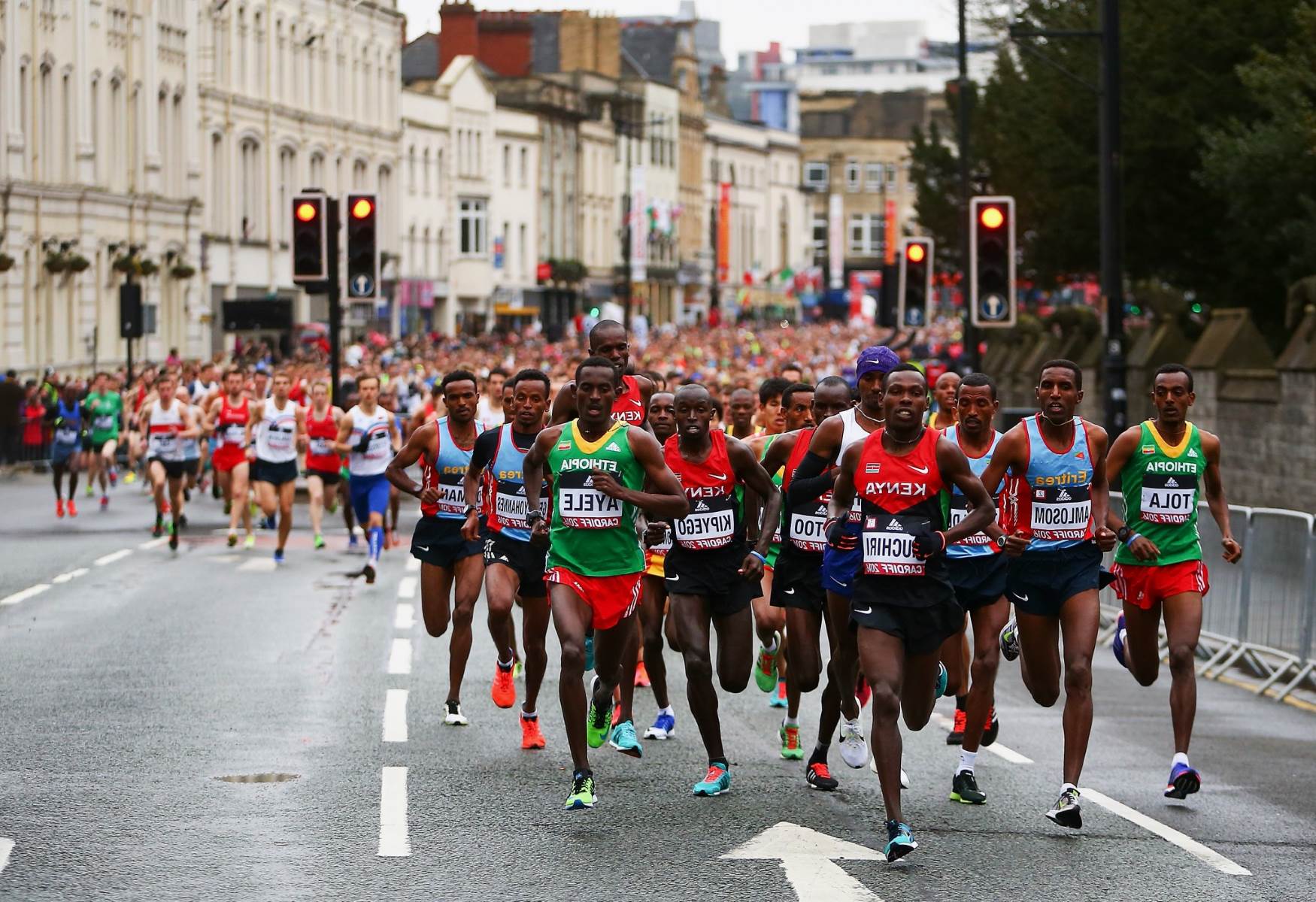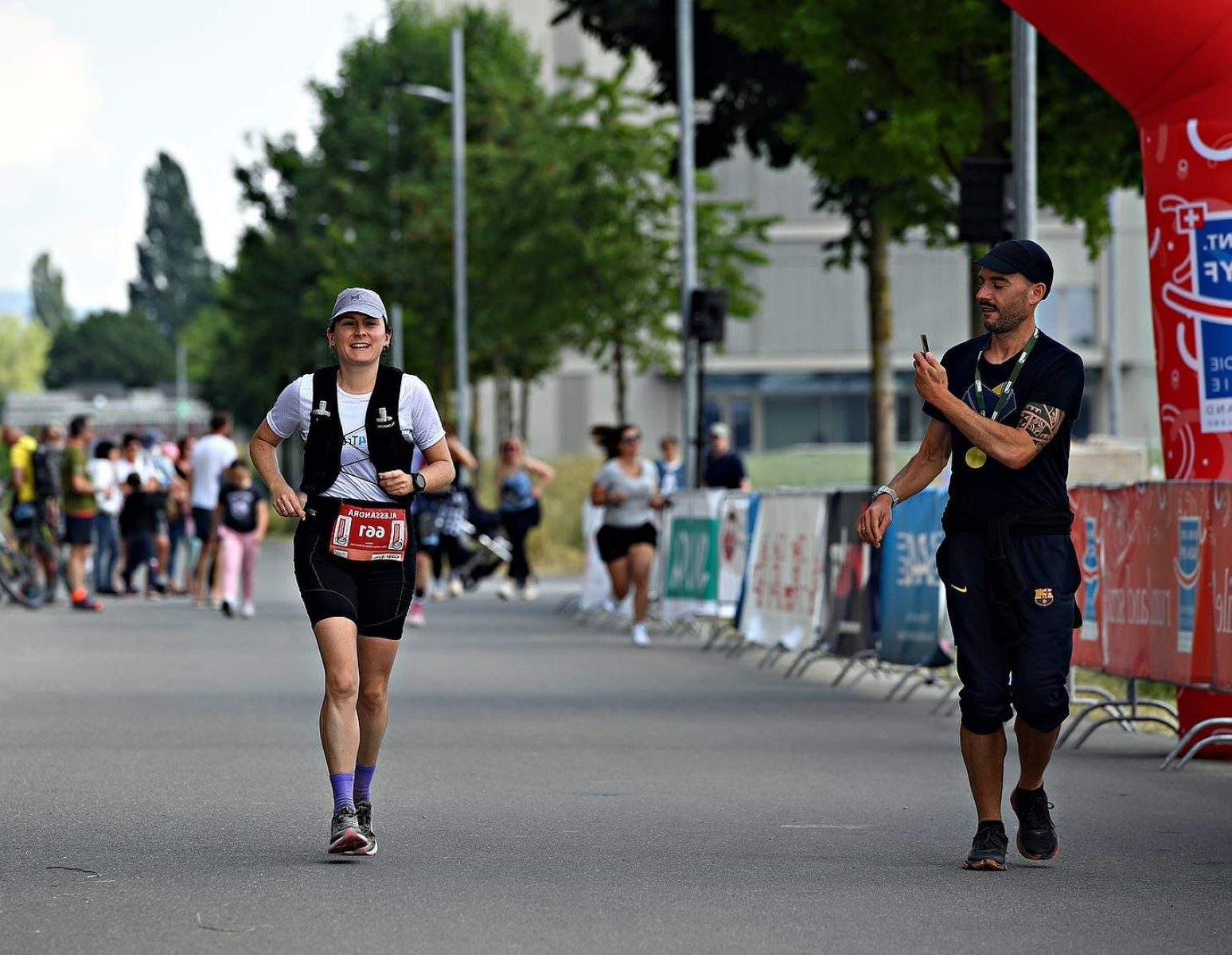Home>Training & Techniques>Ways To Enhance Your VO2 Max For Better Running Performance
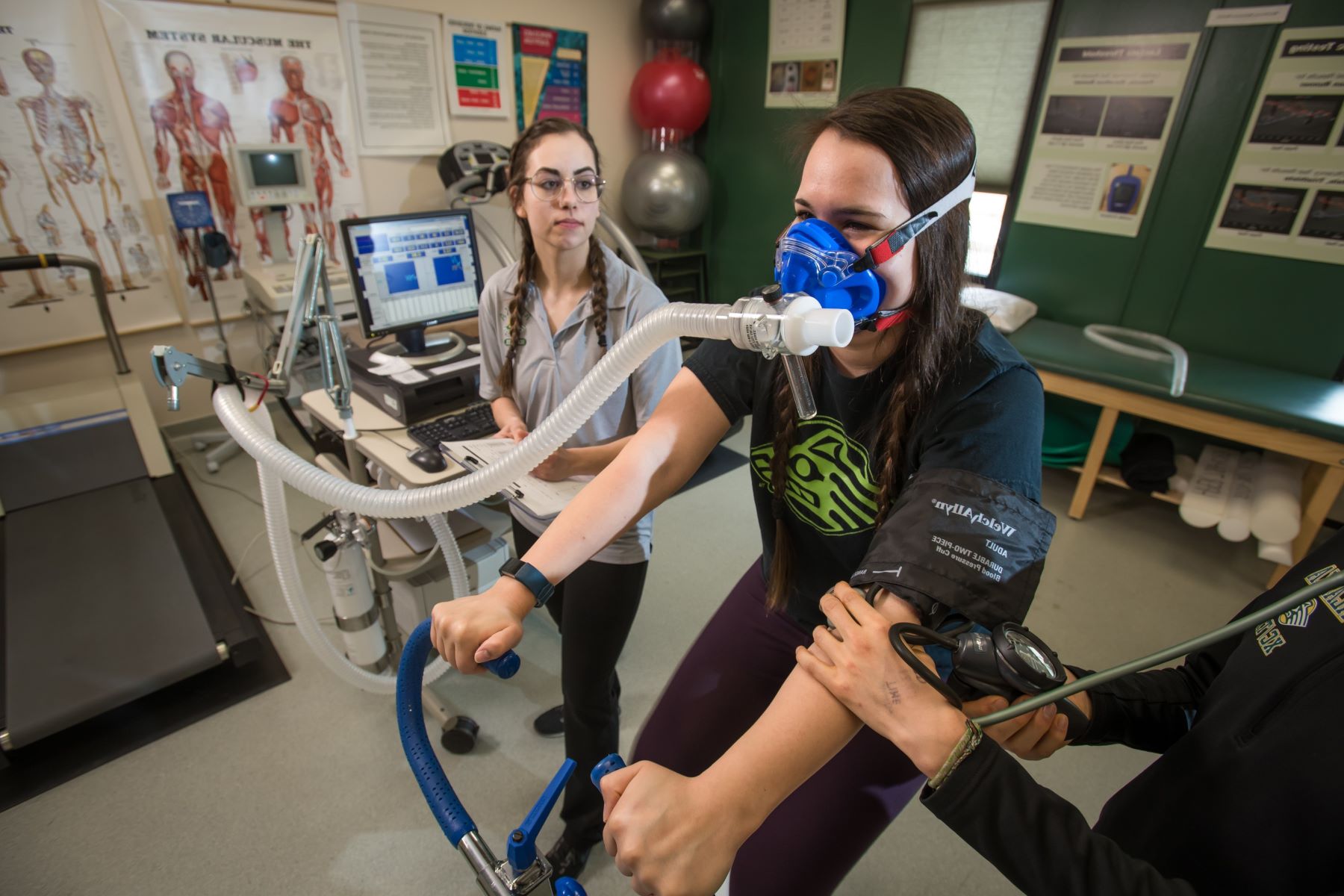

Training & Techniques
Ways To Enhance Your VO2 Max For Better Running Performance
Published: February 27, 2024
Discover effective training and techniques to boost your VO2 max and improve your running performance. Unlock your potential with expert tips and strategies.
(Many of the links in this article redirect to a specific reviewed product. Your purchase of these products through affiliate links helps to generate commission for Therunningadvisor.com, at no extra cost. Learn more)
Table of Contents
- Understanding VO2 Max and Its Importance in Running
- Incorporating High-Intensity Interval Training (HIIT) into Your Workouts
- Utilizing Long, Steady-State Runs to Improve Aerobic Capacity
- Implementing Strength Training to Support VO2 Max Improvement
- Exploring Altitude Training for Enhanced Oxygen Utilization
- Optimizing Nutrition and Hydration for VO2 Max Enhancement
- Monitoring and Tracking Progress with VO2 Max Testing
Understanding VO2 Max and Its Importance in Running
VO2 max, or maximal oxygen uptake, is a crucial physiological measure that reflects an individual's aerobic endurance and cardiovascular fitness. It represents the maximum amount of oxygen that an individual can utilize during intense exercise, serving as a key determinant of running performance. Understanding the significance of VO2 max in running is essential for athletes and fitness enthusiasts seeking to optimize their training and achieve peak performance.
In the context of running, VO2 max directly influences an individual's ability to sustain high-intensity efforts over extended periods. It serves as a reliable indicator of aerobic capacity, reflecting the efficiency of the cardiovascular and respiratory systems in delivering oxygen to the working muscles. As such, a higher VO2 max is associated with improved endurance and faster race times, making it a focal point for runners aiming to enhance their performance.
By comprehending the role of VO2 max in running, athletes can tailor their training regimens to target and elevate this critical physiological parameter. Through structured and purposeful training interventions, individuals can effectively improve their VO2 max, thereby unlocking their full potential on the track or road.
Understanding the significance of VO2 max in running also underscores the importance of implementing diverse training modalities to elicit physiological adaptations. By incorporating a combination of high-intensity interval training (HIIT), long, steady-state runs, strength training, and altitude training, runners can systematically enhance their VO2 max and overall aerobic capacity.
In essence, grasping the concept of VO2 max and its relevance in running empowers athletes to make informed decisions regarding their training approaches. It enables them to optimize their workouts, monitor their progress, and ultimately elevate their running performance by harnessing the potential of their aerobic systems.
In summary, a deep understanding of VO2 max and its importance in running serves as a cornerstone for athletes striving to reach new heights in their performance. By recognizing the pivotal role of this physiological parameter, individuals can embark on a purposeful journey towards maximizing their aerobic potential and achieving their running goals.
Read more: Does Weight Affect VO2-max?
Incorporating High-Intensity Interval Training (HIIT) into Your Workouts
High-Intensity Interval Training (HIIT) has emerged as a potent and time-efficient strategy for enhancing VO2 max and overall running performance. This training approach involves alternating between short bursts of intense exercise and periods of active recovery or rest. By integrating HIIT into your workout routine, you can effectively stimulate physiological adaptations that contribute to improved aerobic capacity and increased VO2 max.
The hallmark of HIIT lies in its ability to elicit significant cardiovascular and metabolic responses within a condensed timeframe. During high-intensity intervals, the body experiences heightened oxygen demand, leading to an increased oxygen uptake and utilization. This, in turn, places a substantial demand on the cardiovascular and respiratory systems, prompting adaptations that enhance their efficiency in delivering oxygen to the working muscles.
In the context of running, HIIT holds immense potential for elevating VO2 max and refining anaerobic threshold, both of which are pivotal for endurance and performance. By engaging in HIIT sessions tailored specifically for runners, individuals can target the energy systems and physiological processes that underpin their aerobic capacity. This targeted approach fosters adaptations that translate to enhanced oxygen utilization, improved cardiovascular function, and heightened endurance, all of which are instrumental for optimizing running performance.
A typical HIIT session for runners may involve short, intense intervals of running at near-maximal effort, interspersed with brief recovery periods. For instance, a workout could consist of repeated 400-meter sprints at a challenging pace, followed by active recovery periods of light jogging or walking. This structured approach challenges the cardiovascular system, promotes efficient oxygen utilization, and cultivates the ability to sustain high-intensity efforts over extended durations.
Moreover, the versatility of HIIT allows for customization to accommodate varying fitness levels and training goals. Whether you are a seasoned athlete or a novice runner, HIIT can be tailored to suit your individual capabilities and progressively challenge your aerobic capacity. This adaptability makes HIIT an inclusive and adaptable training modality, accessible to individuals seeking to enhance their VO2 max and elevate their running performance.
In essence, incorporating HIIT into your workouts presents a dynamic and effective means of targeting VO2 max improvement and overall aerobic capacity. By embracing the intensity and diversity offered by HIIT, runners can harness its potential to stimulate physiological adaptations that optimize oxygen utilization, elevate cardiovascular fitness, and ultimately propel them towards peak performance on the track or road.
Utilizing Long, Steady-State Runs to Improve Aerobic Capacity
Long, steady-state runs stand as a cornerstone of endurance training, playing a pivotal role in enhancing aerobic capacity and elevating VO2 max. These extended, moderate-intensity runs serve as a potent stimulus for physiological adaptations that underpin improved endurance and running performance.
When engaging in long, steady-state runs, runners sustain a consistent, moderate pace over an extended duration, typically ranging from 45 minutes to several hours, depending on individual fitness levels and training objectives. This sustained effort challenges the cardiovascular and respiratory systems, prompting a cascade of physiological responses that contribute to enhanced aerobic capacity.
One of the primary benefits of long, steady-state runs lies in their ability to stimulate mitochondrial biogenesis, a process crucial for optimizing aerobic energy production. Mitochondria, often referred to as the powerhouse of the cell, play a central role in aerobic metabolism, facilitating the conversion of oxygen and nutrients into adenosine triphosphate (ATP), the primary energy currency of the body. Through consistent engagement in long, steady-state runs, individuals can promote the proliferation and efficiency of mitochondria within muscle cells, thereby enhancing their capacity for aerobic energy production.
Furthermore, these prolonged runs elicit favorable adaptations in the cardiovascular system, including increased stroke volume, improved cardiac output, and enhanced capillarization within the working muscles. Such adaptations contribute to more efficient oxygen delivery to the muscles, enabling sustained performance at submaximal intensities. Additionally, long, steady-state runs foster improvements in muscular endurance and the utilization of fat as a fuel source, further augmenting the body's ability to sustain prolonged efforts.
In the context of VO2 max improvement, long, steady-state runs serve as a potent stimulus for elevating this key physiological parameter. By consistently engaging in extended, moderate-intensity runs, individuals can enhance their oxygen uptake and utilization, leading to an increase in VO2 max over time. This adaptive response reflects the body's heightened capacity to extract and utilize oxygen during exercise, ultimately translating to improved endurance and performance in running activities.
Moreover, long, steady-state runs offer a platform for mental fortitude and resilience development, as individuals navigate extended periods of continuous effort. This mental aspect of endurance training is invaluable for runners, as it cultivates the ability to sustain focus, manage discomfort, and persevere through challenging race scenarios.
In essence, the incorporation of long, steady-state runs into a comprehensive training regimen represents a strategic approach for enhancing aerobic capacity and elevating VO2 max. By embracing the physiological and psychological benefits offered by these prolonged efforts, runners can fortify their endurance, optimize oxygen utilization, and lay a robust foundation for peak performance in running pursuits.
Implementing Strength Training to Support VO2 Max Improvement
In the pursuit of optimizing VO2 max and enhancing running performance, the integration of strength training stands as a pivotal component of a comprehensive training regimen. While endurance running predominantly emphasizes aerobic capacity, the inclusion of targeted strength training exercises can yield substantial benefits that complement and support VO2 max improvement.
Strength training serves as a catalyst for enhancing running economy, which directly influences VO2 max and overall aerobic capacity. By incorporating exercises that target key muscle groups involved in running, such as the quadriceps, hamstrings, glutes, and core muscles, individuals can bolster their biomechanical efficiency and muscular power output. This, in turn, translates to improved running economy, allowing for more economical oxygen utilization and reduced energy expenditure at submaximal intensities.
Furthermore, the implementation of strength training fosters neuromuscular adaptations that contribute to enhanced running performance. By engaging in exercises that promote muscular strength, power, and coordination, runners can refine their movement patterns and stride mechanics, leading to greater mechanical efficiency during running. This enhanced neuromuscular coordination and muscular recruitment optimize energy transfer and utilization, ultimately supporting the body's ability to sustain higher intensities with improved economy.
In the context of VO2 max improvement, the benefits of strength training extend beyond biomechanical and neuromuscular enhancements. Engaging in resistance exercises stimulates physiological adaptations that augment the body's overall metabolic demand, leading to increased energy expenditure and post-exercise oxygen consumption. This heightened metabolic stress contributes to the development of a more robust cardiovascular system, fostering improvements in cardiac output, peripheral circulation, and oxygen delivery to the working muscles, all of which are integral for elevating VO2 max.
Moreover, the incorporation of strength training plays a crucial role in injury prevention and resilience, which are paramount for consistent and progressive training. By fortifying the musculoskeletal system through targeted resistance exercises, individuals can mitigate the risk of overuse injuries and imbalances, thereby sustaining uninterrupted training and facilitating continuous VO2 max improvement.
In essence, the integration of strength training into a runner's training regimen serves as a multifaceted approach to support VO2 max improvement and overall running performance. By harnessing the biomechanical, neuromuscular, metabolic, and injury-preventive benefits offered by strength training, individuals can cultivate a robust physiological foundation that complements their aerobic capacity, ultimately propelling them towards peak performance in running pursuits.
Exploring Altitude Training for Enhanced Oxygen Utilization
Altitude training has garnered significant attention in the realm of endurance sports, offering a unique and potent avenue for enhancing oxygen utilization and elevating aerobic capacity. This specialized training modality involves exposure to high-altitude environments, where the reduced oxygen availability prompts physiological adaptations that confer notable benefits to athletes, particularly runners.
At higher altitudes, the partial pressure of oxygen diminishes, creating a hypoxic environment that stimulates the body to adapt in response to the decreased oxygen supply. One of the primary adaptations induced by altitude exposure is the upregulation of erythropoiesis, the process of red blood cell production. This physiological response serves as a cornerstone for enhancing oxygen-carrying capacity, as an increased red blood cell count facilitates improved oxygen transport to the working muscles, ultimately supporting enhanced aerobic performance.
Furthermore, altitude training elicits favorable changes in muscle capillarization, enhancing the network of tiny blood vessels within the muscles. This augmented capillary density promotes more efficient oxygen delivery to the muscle fibers, amplifying the capacity for oxygen utilization during exercise. Additionally, altitude exposure stimulates mitochondrial biogenesis, fostering the proliferation and enhanced function of mitochondria within muscle cells. These adaptations collectively contribute to improved aerobic energy production and utilization, underpinning the elevation of VO2 max and endurance capacity.
Altitude training also engenders neuromuscular and metabolic adaptations that are conducive to enhanced running performance. The hypoxic stress experienced at altitude prompts the recruitment of fast-twitch muscle fibers, fostering improvements in muscular strength and power output. Moreover, altitude exposure stimulates the production of hypoxia-inducible factor-1 (HIF-1), a transcription factor that orchestrates various cellular responses to low oxygen levels. These responses include enhanced glycolytic enzyme activity and improved muscle buffering capacity, both of which contribute to optimized energy production and utilization during high-intensity efforts.
It is important to note that altitude training can be implemented through various approaches, including living and training at natural high-altitude locations, utilizing altitude simulation systems, or engaging in intermittent hypoxic exposure. Each approach offers distinct advantages and considerations, allowing athletes to tailor their altitude training regimen to align with their specific goals and logistical constraints.
In essence, exploring altitude training presents a compelling avenue for athletes, particularly runners, to enhance oxygen utilization and elevate their aerobic capacity. By leveraging the physiological adaptations induced by altitude exposure, individuals can systematically augment their red blood cell count, optimize oxygen delivery to the muscles, and refine their metabolic and neuromuscular responses, ultimately translating to improved VO2 max and enhanced running performance.
Read more: Experience The VO2-max Test For Yourself
Optimizing Nutrition and Hydration for VO2 Max Enhancement
Optimizing nutrition and hydration stands as a foundational pillar for enhancing VO2 max and overall running performance. The strategic management of dietary intake and fluid balance plays a pivotal role in supporting physiological adaptations that contribute to improved aerobic capacity and oxygen utilization.
Adequate nutrition forms the cornerstone of VO2 max enhancement, as it provides the essential substrates and micronutrients necessary for energy production, oxygen transport, and cellular function. Carbohydrates, in particular, serve as a primary fuel source for aerobic exercise, supplying the muscles with readily available energy to support sustained efforts. By prioritizing complex carbohydrates from whole grains, fruits, and vegetables, runners can ensure a steady and sustained supply of energy, optimizing their capacity for prolonged exercise and VO2 max improvement.
Furthermore, the strategic inclusion of high-quality proteins in the diet supports muscle repair, growth, and maintenance, essential for the structural integrity and function of the cardiovascular and respiratory systems. Additionally, adequate intake of essential fatty acids, found in sources such as nuts, seeds, and fatty fish, contributes to cardiovascular health and cellular membrane function, further supporting oxygen delivery and utilization during exercise.
Hydration plays a pivotal role in optimizing VO2 max, as adequate fluid intake is essential for maintaining plasma volume and cardiovascular function. Dehydration can significantly impair aerobic performance and oxygen transport, underscoring the critical importance of fluid balance for runners. By prioritizing regular and sufficient fluid intake, athletes can support optimal blood circulation, thermoregulation, and nutrient delivery to the working muscles, all of which are integral for VO2 max enhancement.
Strategic timing of nutrient intake also holds significance in the context of VO2 max improvement. Pre-exercise nutrition should focus on providing a balance of carbohydrates and a moderate amount of protein to fuel the upcoming workout and support muscle function. Post-exercise nutrition plays a crucial role in facilitating recovery and adaptation, emphasizing the replenishment of glycogen stores, muscle repair, and hydration to support subsequent training sessions.
Moreover, the integration of key micronutrients, such as iron, B vitamins, and antioxidants, into the diet contributes to optimal oxygen utilization, energy metabolism, and cellular protection against oxidative stress. These micronutrients play vital roles in supporting the physiological processes that underpin VO2 max improvement, highlighting the multifaceted impact of comprehensive nutrition on running performance.
In essence, optimizing nutrition and hydration represents a fundamental aspect of VO2 max enhancement, offering a strategic avenue for athletes to support their aerobic capacity and running performance. By prioritizing a well-rounded and nutrient-dense diet, coupled with attentive fluid management, runners can lay a robust foundation for physiological adaptations that elevate their VO2 max and propel them towards peak performance on the track or road.
Monitoring and Tracking Progress with VO2 Max Testing
Monitoring and tracking progress with VO2 max testing is a pivotal aspect of optimizing running performance and aerobic capacity. VO2 max testing serves as a valuable tool for assessing an individual's maximal oxygen uptake, providing insights into their aerobic endurance and cardiovascular fitness. By incorporating systematic VO2 max testing into a comprehensive training regimen, runners can gain valuable data to inform their training interventions, track physiological adaptations, and gauge the efficacy of their performance enhancement strategies.
VO2 max testing can be conducted through various methods, including laboratory-based assessments utilizing metabolic carts and gas analysis systems, as well as field-based tests that estimate VO2 max through predictive equations or performance indicators. Laboratory-based testing offers precise measurements of oxygen consumption during maximal exercise, providing a comprehensive understanding of an individual's aerobic capacity. Field-based tests, such as the Cooper 12-minute run or the multistage fitness test (beep test), offer practical alternatives for estimating VO2 max and tracking changes in aerobic fitness over time.
By establishing a baseline VO2 max measurement, athletes can establish a reference point from which to monitor their progress and evaluate the impact of their training interventions. Regular VO2 max testing at designated intervals, such as at the onset of a training cycle, mid-season, and post-season, enables individuals to track changes in their aerobic capacity and identify trends in their physiological responses to training stimuli.
The data obtained from VO2 max testing can inform the adjustment of training variables, such as intensity, duration, and frequency, to ensure that the training regimen effectively targets VO2 max improvement. Additionally, the insights gleaned from VO2 max testing can aid in the identification of individualized training thresholds, guiding the development of tailored workout intensities that optimize aerobic adaptations and support VO2 max enhancement.
Furthermore, VO2 max testing facilitates the evaluation of the efficacy of altitude training, HIIT protocols, and other performance enhancement strategies. By comparing pre- and post-training VO2 max measurements, athletes can assess the impact of specific interventions on their aerobic capacity, enabling them to refine their training approaches and capitalize on the strategies that yield the most substantial improvements.
In essence, monitoring and tracking progress with VO2 max testing empowers runners to make informed decisions regarding their training regimens, optimize their performance enhancement strategies, and systematically elevate their aerobic capacity. By leveraging the valuable insights provided by VO2 max testing, athletes can navigate their training journey with precision, continuously refining their approaches to maximize their VO2 max and unlock their full potential in running pursuits.




